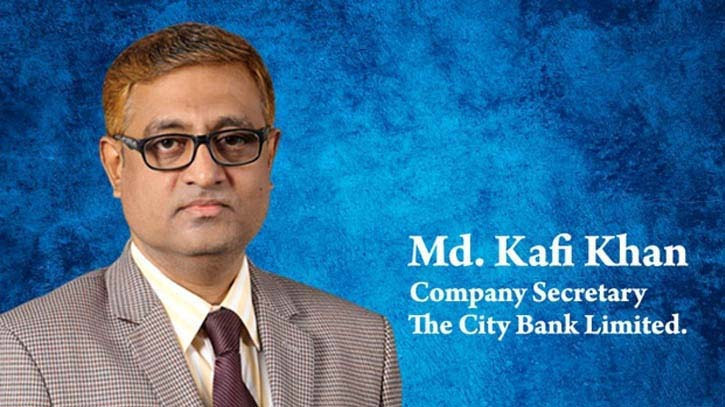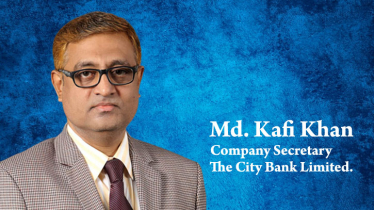
As traditional banks grapple with how to compete in a world of digital-native start-ups and changing customer desires, they cannot avoid the problem of aging core technology. The architecture of banks’ legacy systems does not lend itself to achieving the rapid pace of innovation that is becoming the norm for technology businesses.
Next-gen cloud core- the rapid evolution in retail and commercial banking: Just going into a fundamentally different era of how financial services need to be built, provisioned, and provided to the end users. If one thinks of the big epochs of financial services, it had an era where there was a small number of financial service providers. The technology that was available to create new financial products and services and to improve the user experience was relatively static and built for a relatively slow pace of change. Over the past decade, there has been much more new technology in financial services not just how to design a mobile app or integrate something into a website, but also the back-end technology, including payments, machine learning to help with decisions, and how the price and customize different products on a micro level for each person. This new level of personalization and automation has only recently become possible. Whenever new technologies come out like that, someone is always going to put them together to create a great value proposition for the customer. The iPhone, for example, came out because many individual pieces of technology were put together in an amazing package, to the point where it was almost inevitable that it would come together as it did. So far the same thing is true in the world of financial services. With the most recent developments in artificial intelligence and everything that’s happening around payments and open banking, there are fundamentally different ways to reimagine creating products for different types of customers, whether they are retail or commercial banking customers. There are many opportunities to take all these different technologies, combine them, and then continuously recombine them to keep creating better financial products and services. And given the speed at which new technology is coming out, that’s only going to continue to accelerate. Time is to almost rethink the operating model and technology to be able to keep up.
Approach to participating in the evolving digital financial services scene and core banking technology transformation: Entire philosophy has built around questions such as, “What do banks really need? What are the mission-critical services that allow you to design and serve a specific set of financial products and services in the retail and corporate spaces? And what’s essential to that ?” Then it is asking, “Which of those pieces have existing providers, and which require creating something new that could be a differentiator?” For example, maybe don’t just use one provider for credit scoring, but it can do it differently, market by market. Or maybe it may use a mix of options to build a pricing or credit decisioning model maybe a traditional provider plus one or two new fintechs and an in-house team of five people that custom codes the model. There’s a huge opportunity around all these different areas, so it should focus on providing the cloud infrastructure, service levels, reliability, and performance that enables all these domains of opportunity and building an open platform that other pieces can plug into.
Cloud-native core technology offerings for traditional banks are growing rapidly: It is not necessarily differentiated in the sense of the business features of core banking interest calculations, fees, accounting rules, and so forth. The differentiator is in the how. With Cloud-native core technology, it can create a financial product, whether it’s a mortgage, credit card, or personal loan, literally while having a coffee in the morning, including the complete behavior of that product, the application side of it but also the whole system security, performance, and everything else. And it has the full APIs so the developers build a proof of concept in the next week and then bring that to market in the next few months. It’s that speed that can enable it. And it is derisking because the systems are self-contained and talk to each other via APIs. It’s very easy to test the entire product. All of that allows us to continuously deliver distinctive and delightful financial experiences for customers. The real trick is not necessarily in the pure feature offer, but in how customers receive it, how to embed it into an operating model, and what that unlocks for the rest of the business. It is not necessarily differentiated in the sense of the business features of core banking interest calculations, fees, accounting rules, and so forth. The differentiator is in the how.
Central technology transformation is deeply difficult work complicated by the twin pressures of aging infrastructure and growing competition from fintech and other disruptors: What we’ve seen historically is a lot of different decisions to buy, build, or customize in-house that created bloat around the core, to the point where it became numerous different services, functions, and capabilities all kludged together into one system. It made sense at the time because there weren’t many other choices. What makes this change right now difficult is that it has a legacy system that’s very tightly coupled together. It needs about changing one process, and suddenly have a lot of other things that are closely integrated into it that then require a lot of change. Or a change around one system potentially puts a lot of risk around a different part of your technology. And a huge amount of any such project could simply be tested to be sure don’t completely break everything with one new feature. If it looks at the speed at which fintech companies release new products and update existing ones, it is literally an order of magnitude faster than traditional companies. They can afford to make all those changes because they cause less disruption than legacy tech changes do.
What should banks do now? Should they build or buy the new core technology: Someone has to decide what those new pieces are going to be and plug them in together in a way that works. A lot of it is scouting the market and identifying the different technologies out there. Then banks have to ask how they can put those various technologies together to create a better proposition for the customer and do it in a way that allows the products, services, and technologies that run them to change and adapt often. And then they have to ask how much of the new technology will be done with in-house technical staff, versus third-party help. The answers to these vary case by case. It’s a philosophy that banks have to own the conceptual model and stack, taking responsibility for deciding which pieces are right for them because the technical choices and decisions make determine how to continue to innovate and differentiate in the market. Banks can’t simply trust one vendor to say, “Here is your whole stack,” because it’s impossible for any single provider, no matter who it is, to be able to provide everything needed to innovate and combine those pieces in a way that’s appropriate for particular business as a bank. That curation of partners and technology to build an ecosystem that works for a specific bank is a huge part of the job and the challenge today. This is also true of actual technology companies; they don’t build everything themselves. Rather, they specifically ask, “Okay, what do we not have to build?” They try to build as little as possible because they know there’s so much other technology they can cultivate from. This is actually a product that one of the cloud providers has.” Not only that, but the cloud provider might have hundreds of people working on that product.
Banks to dive into core technology transformation: A large traditional bank wanted to shorten its time to market, so needs to build a “digital speedboat.” It is a specific digital-only product targeted at a specific subset of new or existing customers. To create a fundamental concept and minimum viable product to get it into the hands of customers. Needs a platform that makes integration easy, so it could spend all its energy on designing products and experiences and on creating other services around it. After launching the new product, cycle going, continuously tweaking the financial products could offer, the in-app user experience, and the onboarding journey, and optimizing for costs.
Cautionary tale or pitfalls to be aware of when engaging in this level of change: Banks should come to after achieving an unanticipated level of success with a digital product they had built onto their legacy core system. Because of the technology used on top of it and the stronger-than-expected customer adoption, banks are struggling to keep up with the success. Their costs started to increase as a result. They started to have performance issues and trouble scaling. They actually had to pull back some marketing campaigns and expansion because they were getting hit on the technology, infrastructure, and cost side.
The challenges banks face in the process are myriad: Needs to understand what are going through, and they should think about entire end-to-end operations and design for the target state. It is not just replacing one piece of technology with another one. The technology, fundamentally, is a different enabler in terms of how to run the operations, which other systems use, and how to integrate things. That is redesigning to fundamentally work and act much more like a tech company in terms of organization, processes, speed, et cetera. It’s a mindset of trying to continuously identify the quickest wins from a business perspective. Looking across a portfolio of business lines or products or markets and thinking, Where can have the most immediate impact with potentially the least amount of risk from an execution perspective. Let’s achieve that. And then let’s do another one and another one. Be comfortable with the unknown in that journey. You know what kind of company you want to be, but don’t necessarily know what technology will eventually have, but comfortable with that because the goal is to be able to evolve continuously.
Building a strong innovation capability while still maintaining regulatory compliance: It’s about having systems and processes that are flexible enough that can shift without having to take on massive projects and risks. In that sense, the importance of the element of flexibility and agility of technology and organization applies equally to innovation as it does to respond to these external requirements such as regulatory change or even a crisis because all of these require making changes to the core systems. The challenge has seen in the past in building some new technology alongside the legacy systems is that operating at two speeds is hard. If there are new regulations or compliance requirements coming, it becomes difficult to just apply the change to the product or process involved without having to change many other things around it. So having things siloed and moving in two gears doesn’t work very well in systems that are supposed to play together.
Banks back from implementing core technology transformation and ways out: So far banks are not quite sure where and how to start, because it feels like a huge, intractable problem to them. The trap that a lot fall into is they say, “Well, if our technology’s going to be in the cloud in five or ten years, then let’s start looking at our technology.” That’s not actually the right place to look. Technology and the cloud are just enablers. The real key is customers who have it now and those who want to have it in the future, those that love and those that don’t like it but who want to retain it over the next five or ten years. Then can start to think about what technology needs to support all of that. Will the new products and services use system A or system B? Will it run in the cloud or on an old data center? And that’s where have to come back to that first question of what kind of organization you want to be. If want to operate like a tech company that runs at speed, that has the same sort of customer satisfaction, margins, and customer experiences as a tech company, then are going to be moving to the cloud. And if want to be in the cloud, then should be choosing cloud solutions as much as possible, starting now. Consistency in these types of smaller decisions regarding the business lines and individual projects eventually compounds and creates the biggest overall impact over time. It’s like a fitness program. One bag of chips or one apple doesn’t necessarily make or break the program, but if the goal is to be at a different state from where are now, then have to make more and more choices that are consistent with that goal along the way.
Concluding thoughts and approach: An assumption that anything is going to take five years plus, then you won’t do anything, because it is not even sure if it is going to be in the same job at that time, so why bother starting something? The first task is to start shortening time cycles to be able to create results and outcomes well in a shorter period. Then have to reduce the scope.There’s no other way around it if it is going to have fast outcomes. Scope reduction means thinking in terms of where it can find quick wins. Rather than trying to solve everything, take one slice of a business line and get results with that. Still going to have legacy tech issues to work out in years four to five, but at the end of year one, going to have higher customer satisfaction and higher margins, and will be building the ability to innovate externally or internally in a matter of weeks instead of months. It starts to become a mentality of “What can we achieve in the next couple of quarters?” and not “What can achieve over the next couple of years?” Of course, need to be clear on the vision for the next couple of years, because otherwise start to lose the context of why overhauling individual pieces of a business. Have to stay focused on the fact that going to sunset the legacy tech over the next three to eight years but not replace it now, innovating at the same time and changing the culture and ways of working, so that new tech talent is excited to work on these challenges, and not worried about them retiring as do the legacy tech talent. Customer satisfaction scores are higher, the cost to serve customers is going down, and over three, five, or eight years, retire your legacy systems. That’s going to be the end state for everything.
TDM/MI








